Workplace safety is important at any business. We can walk through your site to point out any safety concerns, help you address them and meet all safety requirements.
Create a workplace safety campaign
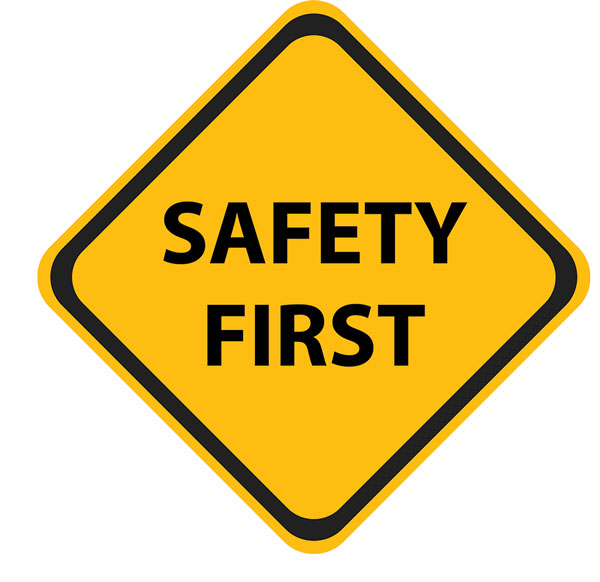
A safety campaign is a way for organizations to share what they’re doing to promote workplace safety and encourage employees to take ownership of the risks present in their day-to-day lives.
Creating a successful workplace safety campaign requires planning, collaboration with employees and stakeholders, and continuous engagement with employees throughout the year.
Take these steps …
- Evaluate your workplace: Look at each area at your worksite, identify risks and determine how serious they are.
- Look at risks to your employees: For example, do you have workers with disabilities or pregnant employees who are at greater risk?
- Analyze, prioritize workplace hazards: List each hazard from most to least dangerous. Prioritize hazards that are likely to cause injury.
- Educate employees: An accident is any event involving a workplace hazard that causes property damage or risks serious harm.
- Record all accidents and injuries: Record the date, time and location of the accident; the type of accident; and the type of injury and its severity.
- Start a mentorship program: Mentorship is a great way for employees to understand workplace safety in an informal setting.
- Address security and privacy concerns: Your safety campaign should emphasize the importance of reporting accidents and assure that employee names will not be released.
- Convene a team to create the campaign: Identify team members, choose a leader and set an official meeting date.
- Make sure the campaign is ongoing. Safety is a continuous process that needs to be addressed year-round. Source: ohsonline.com
We can help! Contact Jennifer at 731-984-8400 or jennifer@physiciansqualitycare.com.
Common workplace accidents result in costliest claims
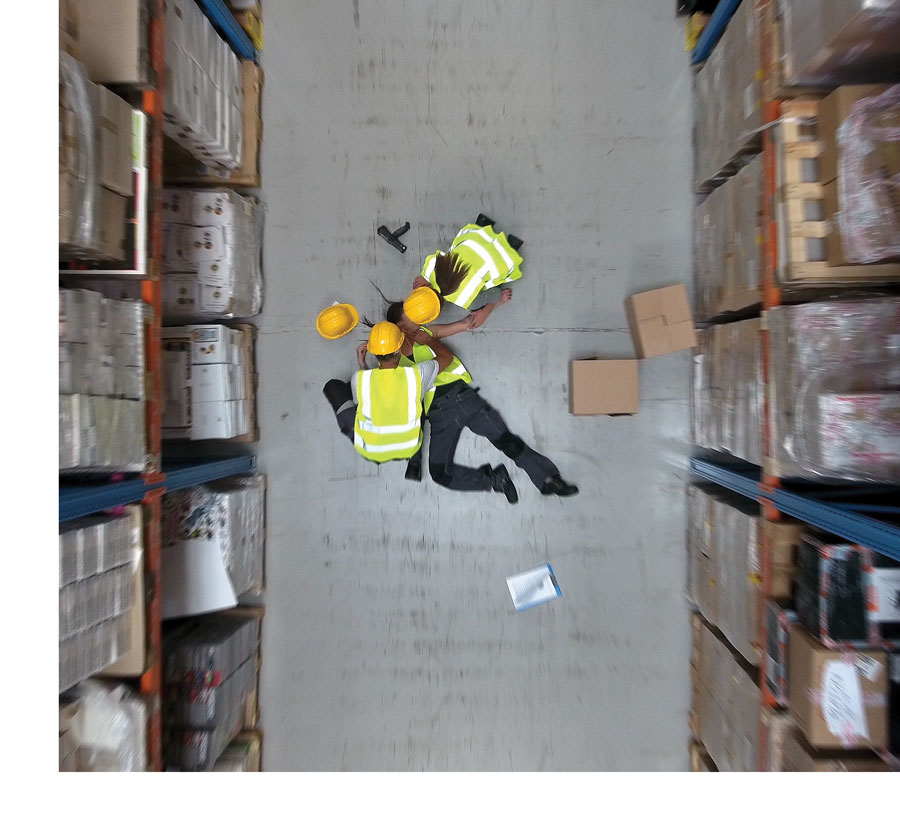
After examining 1.2 million workers’ compensation claims from 2017 to 2021, a new survey found that the most frequent causes of injury are:
- Overexertion (29%)
- Slips, trips and falls (23%)
- Getting struck by an object (12%)
- Motor vehicle accidents (5%)
- Caught-in or caught-between hazards (5%)
The study found that any injury has tangible consequences, and many include long-term, sometimes permanent, effects. By understanding where the risks are, businesses can better identify what to look for and tailor their risk management and employee safety strategies accordingly to help prevent future injuries.
The top causes of severe claims ($250,000 or more) were:
- Slips, trips and falls
- Overexertion
- Being struck by an object
- Caught-in or caught-between hazards
- Motor vehicle accidents
During the past few years, 35% of workplace injuries occurred during an employee’s first year on the job. For 2023, this resulted in six million missed days. Lost workdays by specific injuries are:
- Construction (103 days)
- Transportation (83 days)
- Services (72 days)
- Wholesale (71 days)
- Manufacturing (67 days)
In manufacturing, shoulder injuries were the most frequent injury. And in small businesses, the most common injuries were slips, trips and falls.
Source: EHS Today
We can help you identify hazards at your job site. To get started, contact Jennifer at 731-984-8400 or jennifer@occmedjackson.com.
Violence in the workplace

Violence in the workplace continues to be among the top causes of death for employees.
It can strike anywhere, though workers most at risk are those who exchange money with the public; deliver passengers, goods or services; work alone or in small groups during late night or early morning hours; or work in settings where they have extensive contact with the public.
Employers are encouraged to take steps to protect vulnerable employees …
- Establish a site-specific workplace violence prevention program.
- Provide safety training for employees so they know what to do if they witness or are subjected to workplace violence. Training should include information on how to de-escalate volatile situations and how workers can protect themselves if de-escalation fails.
- Secure the workplace. Where appropriate to the business, install video surveillance, extra lighting, and alarm systems and minimize access by outsiders through identification badges, electronic keys, and guards.
- Provide drop safes to limit the amount of cash on hand. Keep a minimal amount of cash in registers during evenings and late-night hours.
- Tell employees not to enter any location where they feel unsafe.
Source: OSHA
A worker gets injured on the job every 7 seconds
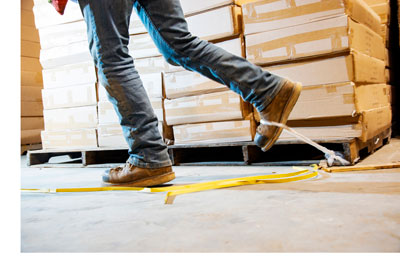
That’s right; the National Safety Council estimates that an on-the-job injury occurs every seven seconds. The council also reported that work-related, medically consulted injuries totaled 4.53 million in 2022.
If one of your employees gets injured, turn to Physicians Quality Care OCCMed.
We have the experience to expertly steer you through the entire workers’ compensation process — from treating the injured employee and determining causation to keeping you informed throughout the process and providing the documentation you need.
We are available to treat workers’ comp patients from 7 a.m. to 7 p.m. every day of the week at both our Jackson and Milan locations. Our OCCMed facility at our Jackson location has a separate entrance and waiting area so your employee does not come in contact with sick patients in our urgent care clinic.
You don’t need to call ahead or have an appointment. (If you can, though, calling ahead before the employee arrives will help us provide treatment more efficiently.)

Your injured employee will leave our OCCMed facility with a doctor’s statement.
Our workers’ comp nurse will communicate with your safety manager or third-party administrator to make sure your employee gets the best care possible.
Our goal is to get your employee back to full duty as soon as possible.
Consider putting Physicians Quality Care OCCMed on your workers’ comp panel. Contact OCCMed Director Jennifer Hill at 731-984-8400 or jennifer@occmedjackson.com.
Stairs instead of ladders
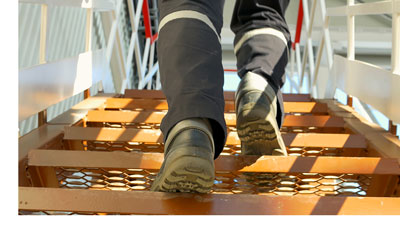
In the quest for safer workplaces, one change is steadily gaining momentum: the transition from ladders to stairs.
From warehouses to construction sites, businesses are beginning to recognize the long-term benefits of installing stairs over ladders for routine and emergency access.
The Risk with Ladders
Ladders are a common fixture in workplaces for providing access to elevated platforms, storage areas and maintenance spots. However, they pose significant risks. According to safety data, falls from ladders account for a substantial number of workplace injuries and fatalities every year.
The primary concerns with ladder use include instability, workers over-reaching to get something, and falls and loss of balance when carrying tools or equipment. These risks contribute to a growing consensus among safety professionals that alternatives to ladders should be sought wherever possible.
Stairways to Safety
With their stable platforms and handrails, stairs reduce the likelihood of falls and provide a more secure method for ascending to and descending from heights.
Key advantages include increased stability, improved load capacity because stairs can support more weight, reduced worker fatigue because they’re less physically demanding to climb, and enhanced productivity.
Source: EHS Today
Lift objects the right way
Back injuries account for one in five workplace injuries.
Here’s how to lift properly …
- Stand as close to the load as possible.
- Plant your feet shoulder-width apart with one foot slightly ahead of the other.
- Bend at the hips and knees only until you’re deep in a squatting position.
- Keep your head up and straight with your shoulders back to keep your back straight.
- Hold the load close to your body at waist height.
- Engage your core muscles as you push against the ground and straighten your legs.
Source: OSHA.com
25 steps for a safer office
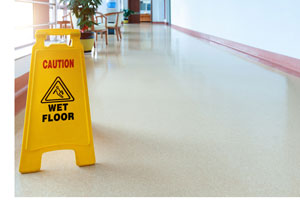
It’s fairly obvious that safety and health hazards can exist on worksites filled with heavy machinery and equipment. The office setting is also fraught with dangers — from slips and falls to computer eye strain.
Many of these hazards are also quite obvious, but we’ll point them out anyway.
- Clutter: Boxes, files and other items piled in walkways can create tripping hazards.
- Standing on chairs, particularly rolling office chairs, to reach something is a significant fall hazard. Invest in a step ladder.
- Blind corners in hallways: Consider installing convex mirrors at these intersections.
- Slick marble or tile walkways: Cover with carpeting and other skid-resistant surfaces, particularly at inside entrances.
- Shut the drawer: File cabinets with too many fully extended drawers could tip over; they also pose tripping hazards
- Safe stacking: Heavier items go on the bottom, making it less likely for the stack to fall over.
- Adjustable equipment: One size does not fit all in an office workstation. You’ll have fewer ergonomics issues if chairs, monitors and work surfaces are adjustable.
- Employee training: Make sure everyone knows how to use the adjustable equipment.
- Feet on the floor: Unless an employee’s feet are on the floor, an ergonomic chair will not be able to reduce pain and discomfort.
- Document holders: They will reduce neck strain if the employee must look from the document to the computer frequently.
- Correct mouse placement: The mouse should always be next to and on the same level as the keyboard.
- Dim the lights and use task lamps with recessed lightbulbs: Florescent lights in office buildings often are too bright for optimal vision.
- Computer monitor position: The correct position is slightly below eye level and 20-26 inches from the eyes.
- Curtains or blinds: They minimize screen glare caused by open windows.
- Eyeglasses: Corrective lenses are available for computer use that allow the wearer to see the full monitor without neck strain.
- Computer font size: Make it large enough to help prevent both neck and eye strain.
- Breaks: A 10-minute break for every hour on the computer reduces eye strain and fatigue.
- Electric cords: Keep them in good repair; don’t overload outlets.
- Space heaters: Verify the devices are approved for commercial use and have a switch that automatically shuts off the heater if it is tipped over.
- Fire sprinklers: Don’t block with furniture or tall stacks of materials.
- Escape routes: Don’t block them or prop open fire doors.
- Double check: Conduct periodic walk-throughs to look for hazards and to maintain ergonomic task design.
- Be alert: Monitor signs of musculoskeletal disorders.
- Talk: Make sure employees can talk to supervisors about their concerns.
- Reporting systems: Establish ways for employees to report safety
Source: Safety+Health
From identifying noise hazards to helping you establish safety standards, we’re pros at helping you create a safer work environment.
Contact OCCMed Director Jennifer Hill at 731-984-8400 or jennifer@occmedjackson.com.
A safe, healthy workplace is best practice
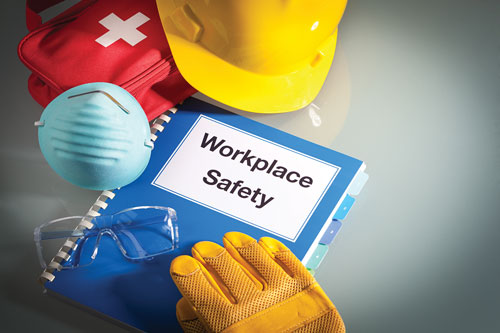
Safety programs benefit employees as well as employers, and they are just as important as any other area of an organization. They protect employees from getting hurt, and they prevent loss time in the workplace.
Employers should implement a strong safety program that is proactive; it identifies potential safety problems and then takes steps to decrease the risk of those problems with safety practices.
A strong safety program has …
- Commitment from management, which should lead by example by practicing safe behaviors.
- Safety as a top priority.
- Employee involvement. Employees are encouraged to bring up safety concerns, help address those concerns and get positive feedback from the boss.
- Worksite analysis. Health and safety hazards are evaluated continually, and the worksite is up-todate on all OSHA requirements.
- Hazard prevention. Management and employees work together to identify and eliminate hazards.
- Training. The employer provides ongoing education to review safety protocols. Both management and employees know what to do if an emergency or unsafe condition occurs in the workplace.
We can help! Contact Jennifer at jennifer@physiciansqualitycare.com or 731-984-8400 to get started on a safety program.
